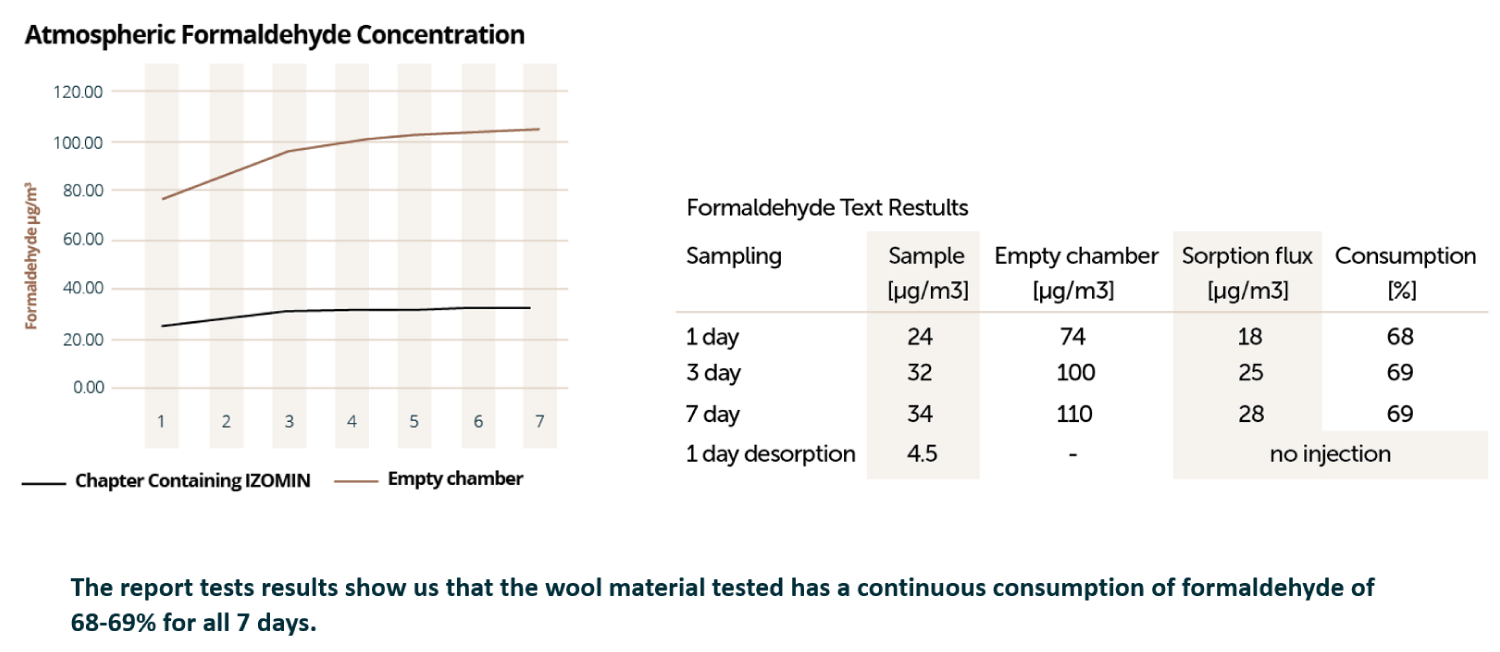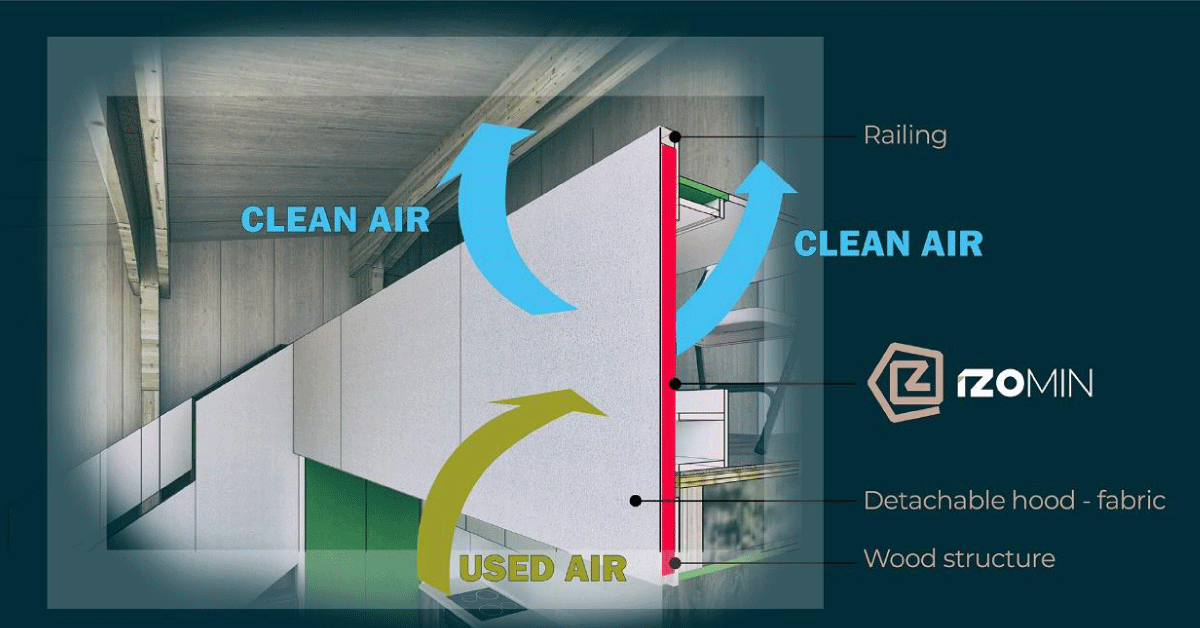More Information
Submitted: July 20, 2022 | Approved: August 25, 2022 | Published: August 26, 2022
How to cite this article: Cezar B. IZOMIN – Ecological solution for sustainable constructions. Ann Civil Environ Eng. 2022; 6: 050-052.
DOI: 10.29328/journal.acee.1001040
Copyright License: © 2022 Cezar B. This is an open access article distributed under the Creative Commons Attribution License, which permits unrestricted use, distribution, and reproduction in any medium, provided the original work is properly cited.
IZOMIN – Ecological solution for sustainable constructions
Bulacu Cezar*
S.C, MINET S.A, Ramnicu Valcea, Romania
*Address for Correspondence: Bulacu Cezar, S.C, MINET S.A, Ramnicu Valcea, Romania, Email: [email protected]
The depletion of non-renewable resources is followed by severe ecological and social impacts, and the heavy usage of raw, virgin resources leaves significant, long-lasting footprints. The transition to a more circular economy, where the value of products, materials and resources is maintained and circulated (by recycling activities) in the economy for as long as possible, is an essential contribution to the EU’s efforts to develop a sustainable, low carbon, resource efficient and competitive economy. In this context, ecological solutions consisting of materials that help carbon sequestration and necessitate small amounts of energy for production are becoming increasingly popular from a building construction point of view, namely: The raw material is cheap and in large quantities; has low thermal conductivity; are from a renewable source. The paper presents an analysis of IZOMIN an innovative thermal insulating product made from renewable or recycled resources and their main technical properties, the purpose being to inform the market in order to increase the present level of technical knowledge and technologies used to facilitate the implementation of buildings with high energy efficiency.
We are the generations that are most acutely confronted with the reduction of natural resources and the negative effects of the impact of human activities on the environment, and this forces us to change both our thinking and the way we relate to the environment and the economic activities and social.
Sustainable development is a current concept, which requires continuous and increasing implementation, and which involves identifying new opportunities to meet current needs so that the degree of meeting the needs of future generations is not adversely affected [1].
In this context, the use of natural resources in high-value-added products is a strategic direction for sustainable development of converging sectors, based on disruptive technologies and innovation.
Starting from:
- The demands imposed on modern houses/ buildings, namely, to be sustainable, to use sustainable and high-quality materials, to ensure high thermal comfort, low energy and resource consumption, a healthy, safe, and environmentally friendly space,
- The fact that the semi-coarse and coarse wool fibers are unused waste, unconventional textile technologies were made thermally or mechanically reinforced textile structures that can be used as thermal, phonic absorbing, and air purification elements for building insulation.
Experimental research at the laboratory and industrial level has validated the possibility of making non-woven textile products based on sheep’s wool, which ensures both the achievement of the objectives of strength and durability, as well as those of thermal efficiency of constructions, at the same time contributing to the increase of the air quality in the interior space. Experimental tests have shown that this type of product contributes to the reduction of volatile organic compounds, implicitly formaldehyde, from the interior, following a process of physisorption (adsorption into micropores in the fiber structure) and by a chemisorption reaction (formation of a bond chemical stable in formaldehyde and the side chains of the amino acids lysine and arginine and with the starch groups of glutamine and asparagine), managing to reach even more than 85% reduction in the concentration of formaldehyde after only 3 days of exposure. At the same time, due to the possibility of antifungal treatment of such products, experimental research has shown that the probability of development of micro-films of microorganism type mold/fungus is reduced by over 70%, reaching even 99%, according to the antimicrobial activity assessment methods indicated by ASTM E 2149-13. Furthermore, the water vapor permeability characteristic of these products gives the construction the possibility to “breathe”, i.e. to transfer water vapor to and from the outside, thus allowing an adjustment of the humidity of the indoor air, which reduces the risk of mold and allows the population access to healthy living conditions [2-4].
The new product is a registered trademark under the name of IZOMIN LD, MD and HD and is in accordance with EU norms, meets the endues requirements in terms of thermal conductivity (W/mk), thermal resistance (m2k/w), bulk density (kg/m3), water absorption (kg/m2), resistant to fungi attack, flammability class E, classification of acoustic ceiling elements class B, C, with absorbent properties, including volatile organic compounds (VOCs) at risk for human health.
In Romania, more than 40 000 tons of wool are getting thrown away from the textile industry. Inserting them in construction insulation can be a cost-effective solution and also an environment-friendly one. Wool waste can’t cover the demand in the construction industry, but reintegrating textile waste into insulating materials can be the answer to a scalable solution.
Therefore, it is considered that innovative products, such as non-woven wool mattresses, intended for thermal insulation of buildings, contribute not only to the energy efficiency of buildings or to identify a way to capitalize on an under-exploited natural resource, but also to increase hygiene and comfort of the inhabited interior space, by increasing air quality. Thus, indirectly but effectively, an increase in the health of the population is obtained, especially in the conditions in which the WHO has indicated that over 99% of the population breathes polluted, unhealthy air and, therefore, 13,000,000 deaths. Are registered annually [5-8].
The product approval process ensures sustainable SC MINET SA development, with beneficial implications in the sheep sector, constructions, and finally, in the protection of the environment and quality of life.
What we have already done - Over 4
The solution illustrated is part of the Innovative filtering and air Cleaning Solution, IZOMIN, proposed for the OVER 4 Passive Houses Building concept.
The Over 4 Concept-House, participated in one of the most interesting international architectural and engineering competitions: SOLAR DECHATLON EUROPE 2019.
The IZOMIN solution has been implemented in an innovative way in elements inside the house.
So that, handrails, the guardrails/balcony were made of perforated and removable wooden boards with IZOMIN solution inside.
This paper presents the thermophysical, acoustic and mechanical characteristics of an innovative product integrating low-quality wool which cannot be used by other industries. This approach could boost Romanian competitiveness, create new business opportunities and innovative, more efficient ways of producing and consuming, and generate local jobs at all skill levels for social integration and cohesion.
The development of such a material can play a significant role in increasing economic efficiency and making changes in the pricing policy of the market for thermal insulation materials, providing an opportunity to use it in private housing construction in regions where there are volumes of sheep waste necessary for production.
- Ahlberg J, Georges E, Norlén M. The potential of hemp buildings in different climates. A comparison between a common passive house and the hempcrete building system, UPPSALA Univ, Sweden, 2014.
- Stevulova N, Cigasova J, Sicakova A, Junak J. Lightweight Composites Based on Rapidly Renewable Natural Resource. Chem Eng Trans. 2013; 35: 589-594.
- Abdou A, Budaiwi I. The variation of thermal conductivity of fibrous insulationmaterials under different levels of moisture content. Construction and Building Materials. 2013; 43: 533-544.
- Berardi U, Iannace G. Acoustic characterization of natural fibers for sound absorption applications. Build Environ 2015; 94: 840–852.
- Danihelová A, Nemec M, Gergel T, Gejdoš M, Gordanová J, Scensný P. Usage of Recycled Technical Textiles as Thermal Insulation and an Acoustic Absorber. Sustainability. 2019; 11: 2968. doi:10.3390/su11102968.
- National Institute of Statistics (2019, 2020), Livestock numbers and animal production 2018, 2019. http://www.insse.ro/cms/ro/content/efectivele-de-animale-și-producția-animală-în-anul-2018, 2019.
- Marques FM, Salgado MS. The building material selection. Importance at the building design. Process foi its sustenability. CIB World building Congress. 2007; 2384-2396.
- Korjenic A, Klarić S, Hadžić A, Korjenic S. Sheep Wool as a Construction Material for Energy Efficiency Improvement. Energies. 2015; 8(6): 5765-5781.


